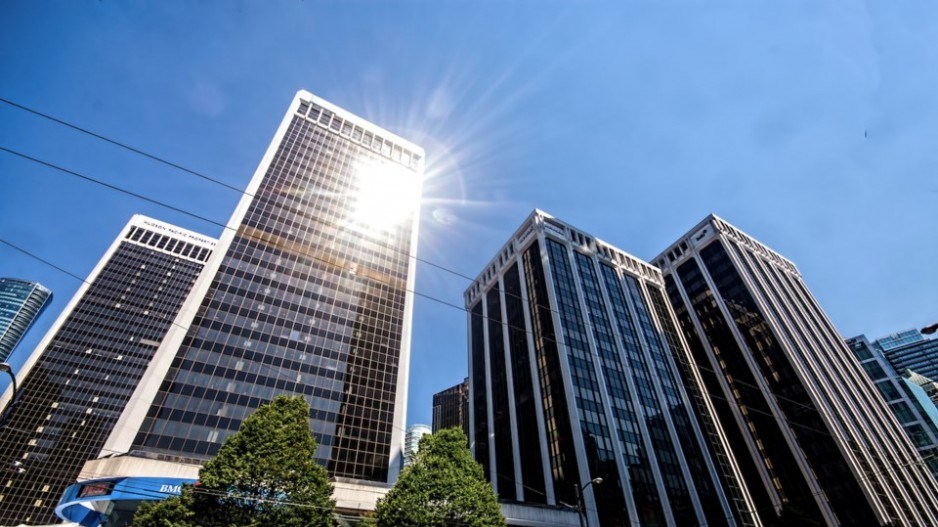While the second half of 2022 has been beset by uncertainties driven by high inflation and rising interest rates, Avison Young’s review of the Vancouver office market during the first half of the year points to a stabilizing environment.
Metro Vancouver saw office vacancies fall to 7.8 per cent during the period, down from 8.4 per cent a year earlier. While companies continued to adjust their space requirements as workers began returning to offices, net absorption in the period totalled 561,260 square feet.
“If you look at absorption in your AAA and A-class product, it’s still very healthy,” said Ronan Pigott, executive vice-president, office leasing with Avison Young, noting that the leasing market remains active.
During the remainder of the year, Avison Young expects to see an additional 1,377,673 square feet of absorption across Metro Vancouver.
Downtown, all classes of space are benefitting from the newfound confidence, unlike a year ago when B and C-class space were seeing elevated vacancies.
“It appears that the surge of sublease offerings attributable to COVID-19 are abating and current and emerging vacancies are a result of delivery and lease-up of new inventory,” Avison Young stated in its report. “Market statistics indicate that vacancy is spread more evenly among all building classes relative to 12 months ago when vacancy was more concentrated in class B and C buildings.”
While they’re still the most impacted by companies right-sizing, Avison Young doesn’t foresee a surge in sublease space due to economic uncertainties that was seen in the depths of the pandemic. Hybrid work arrangements are keeping in-person space requirements in check, creating the opportunities for expansion if the economy heats up and in-person work intensifies.
“While the full impact of the hybrid office space is yet to be realized, there are positive signs of recovery,” Avison Young reported. “Tenants will likely be desiring options such as flex-space and the ability to modify office space without requiring a large renovation.”
“There’s a chance that they’ll revisit and determine that they will actually need more space than they’ve actually committed to,” Pigott said.
The churn in the market is likely to continue through 2023, though at a low level rather than in the form of massive opportunities.
According to Avison Young, space available for lease but not yet vacant accounts for about 2.5% of the downtown office inventory, or 590,000 square feet. This is an improvement over the 755,000 square feet available over and above the actual vacancy rate a year ago.
Sublease offerings could increase if the economic outlook worsens, however.
While most large tech companies have their own in-house real estate teams, smaller companies are more vulnerable to shifts in the larger market. With some shaping up as acquisition targets, consolidation as driven by economic pressures could free up space and create opportunities for prospective tenants.
“M&A activity in the tech sector has brought more attention to Vancouver and shall continue to increase in 2022, which always results in new “grey market” opportunities coming available which can provide welcome relief to tenants searching for new space,” JLL reported in its own review of the Metro Vancouver office market.
JLL noted that sublet space was showing signs of increasing at the end of the second quarter, rising by 100,000 square feet. It expects more will follow.
“A rest is happening in many markets, and Metro Vancouver will likely feel the impacts with the return of some large blocks of premises,” it said. “There will be continued requirements from occupiers for flexibility in their leases, including shorter terms, surrender options, contraction options and expansion options.”




